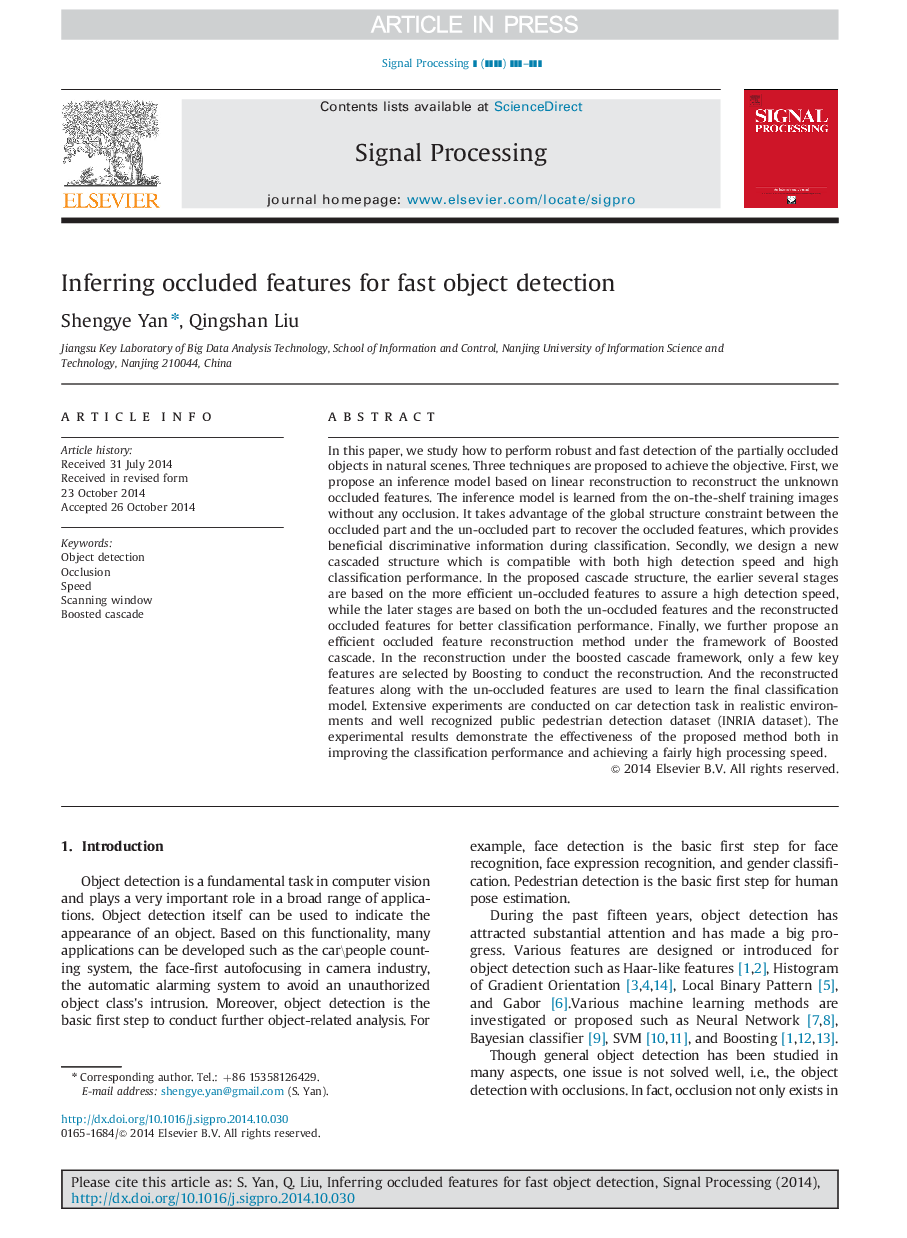| Article ID | Journal | Published Year | Pages | File Type |
|---|---|---|---|---|
| 6959414 | Signal Processing | 2015 | 11 Pages |
Abstract
In this paper, we study how to perform robust and fast detection of the partially occluded objects in natural scenes. Three techniques are proposed to achieve the objective. First, we propose an inference model based on linear reconstruction to reconstruct the unknown occluded features. The inference model is learned from the on-the-shelf training images without any occlusion. It takes advantage of the global structure constraint between the occluded part and the un-occluded part to recover the occluded features, which provides beneficial discriminative information during classification. Secondly, we design a new cascaded structure which is compatible with both high detection speed and high classification performance. In the proposed cascade structure, the earlier several stages are based on the more efficient un-occluded features to assure a high detection speed, while the later stages are based on both the un-occluded features and the reconstructed occluded features for better classification performance. Finally, we further propose an efficient occluded feature reconstruction method under the framework of Boosted cascade. In the reconstruction under the boosted cascade framework, only a few key features are selected by Boosting to conduct the reconstruction. And the reconstructed features along with the un-occluded features are used to learn the final classification model. Extensive experiments are conducted on car detection task in realistic environments and well recognized public pedestrian detection dataset (INRIA dataset). The experimental results demonstrate the effectiveness of the proposed method both in improving the classification performance and achieving a fairly high processing speed.
Related Topics
Physical Sciences and Engineering
Computer Science
Signal Processing
Authors
Shengye Yan, Qingshan Liu,
